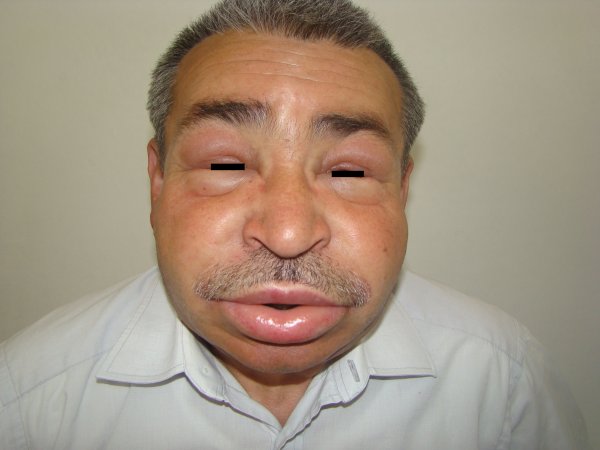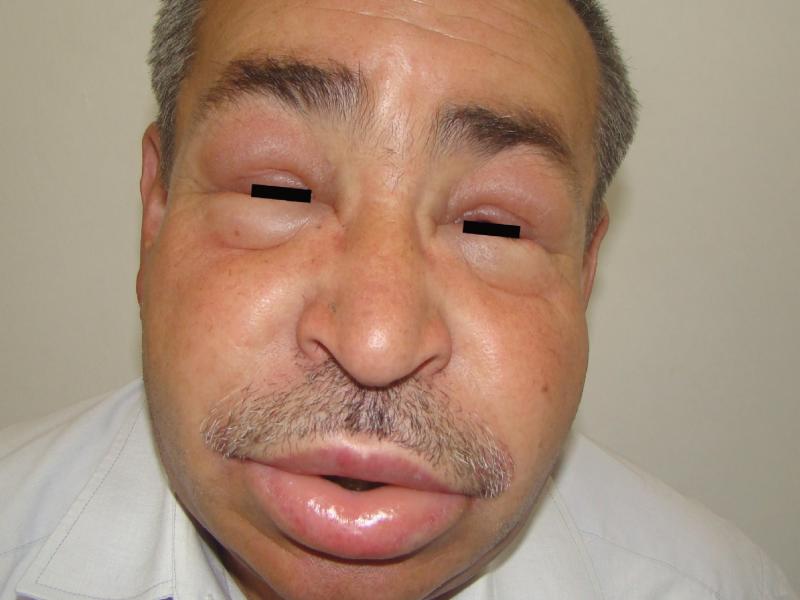
It is a disease characterized by the development of diffuse swelling (edema) as a result of extravasation of fluid, observed in one in 10-50 thousand people, caused by the deficiency or dysfunction of the protein called C1 inhibitor in the blood.
What are the symptoms of the disease?
The disease is characterized by edema attacks lasting 2-5 days on average. In order of frequency, edema occurs in the hands, arms, feet and legs, gastrointestinal system, lips, eyelids, genital area and respiratory tract. Signs and symptoms vary according to the affected organ. Respiratory system attacks in which the large airways are affected are the most life-threatening attacks and are observed in approximately 50% of the patients. Sometimes it can be fatal by preventing the patient from breathing.
What is the frequency of attacks?
The frequency and severity of attacks vary from person to person. While some patients may not have any attacks in their lifetime, some patients may have attacks very often, even every week
Who is affected?
The disease is observed equally in men and women. 75% of the patients inherit the disease from their parents through genetic transmission, and in 25% of the patients, the disease occurs spontaneously. The probability of having the disease in the children of individuals with hereditary angioedema is 50%. But just as all children can be sick, all children can be healthy. Attacks occur before the age of 5 in 40% of the patients, and before the age of 15 in 75% of the patients.
Are there factors triggering the emergence of attacks?
Attacks can occur for no apparent reason, as well as traumas (tooth extraction, surgery, childbirth, cycling, impacts, strenuous handwork, etc.), infections (tonsillitis, flu), stress, various medications (containing estrogen hormone). drugs, some blood pressure medications) and menstrual periods in women can trigger attacks.
How is the diagnosis made?
A definitive diagnosis is made by looking at the levels of some proteins related to the immune system and, if necessary, their functions in the blood. Sometimes genetic studies may be required for diagnosis.
Why is hereditary angioedema an important disease?
Hereditary angioedema attacks are a disease that depresses the morale of the patient, negatively affects his education, work and social life, prevents him from doing business, and most importantly, can cause the patient’s death by suffocation due to tracheal involvement. In addition, because it is a very rare disease, the diagnosis is usually delayed, patients are followed up with diagnoses such as Familial Mediterranean Fever (FMF), allergy, and they may have unnecessary appendicitis, intestinal obstruction and gallbladder surgeries due to abdominal pain.
How is it treated?
The treatment of patients takes place in three stages:
Treatment of attacks: Except for laryngeal attack, mild attacks that do not prevent the patient’s activity may not require treatment. Since airway and facial attacks are dangerous attacks, they should be treated with intravenous C1 inhibitor concentrates without losing time.
Treatment to prevent an attack: These are treatments to prevent an attack from occurring by administering drugs such as C1 inhibitor concentrate or danazol to the patient before procedures that may trigger an attack, such as dental treatments and surgeries.
Treatment to reduce the frequency and severity of attacks: These are treatments aimed at controlling the disease by regularly administering medication to patients who have frequent and severe attacks.
Allergy and cortisone injections should not be done unnecessarily since they are ineffective in this disease.

